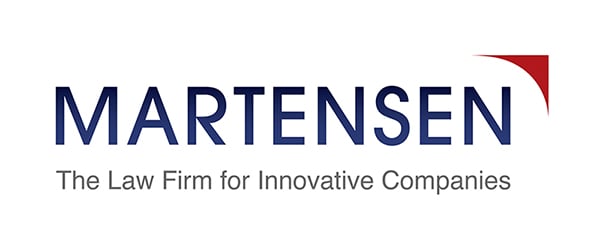The Collaborative Government Workplace: Sharing Ideas… With My Competitors?
Companies often participate in brainstorming sessions. They recognize that through such a process, great inventions are developed and evolve. In a commercial marketplace in which a company gains rights to an invention through employment or contractual agreements, this means to promote and gain new approaches for solving difficult problems is highly accepted, as everyone is working toward a common goal and for a common entity.
But when such collaboration is government sponsored, a different dynamic is created. Companies that work with the government, whether prospectively (in an attempt to acquire contracts) or currently (under one or more existing agreements with the government) need to understand their legal posture in terms of intellectual property (IP) rights throughout the government relationship.
The “Flash of Genius Doctrine”
In 2008, the movie Flash of Genius depicted the arduous legal battle that inventor Robert Kearns endured to gain recognition and financial reward for inventing the intermittent windshield wiper. What came to be called the “flash of genius doctrine” resulted from a U.S. Supreme Court case called Cuno Engineering v. Automatic Devices (1941), and it was applied as a test for innovation until the Patent Act of 1952 declared that “patentability shall not be negatived by the manner in which the invention was made.” In other words, to qualify as an invention, an innovation does not have to be extremely technical or impossible to understand for the average person.
A new and non-obvious concept that has been reduced to practice (either conceptually or actually) is eligible for patenting. An invention just has to be something that has not been done before and is not obvious to those people familiar with the area of technology. “Reduced to practice” means that the invention is actually built and working, or a patent has been filed on it.
That “flash of genius” mentioned above refers to a concept and the know-how to make it a reality. All of this seems pretty straightforward when such a spark occurs in the privacy of one’s garage, office or laboratory. It becomes a bit murky, however, when it happens during an investigative discussion or problem-solving session with like-minded yet unaffiliated technologists. Did one person come up with and share the invention or was it the product of multiple minds collaborating to reach a solution? Can we all use that idea? Do we all own it or does ownership rest only with the person that verbalized the concept?
Government Work and Idea Ownership
By virtue of several laws and regulations, a contractor typically retains ownership of (or title to) inventions created as a result of doing work for the government. This approach to innovation has helped the government spearhead countless advances in technology. The internet, GPS, search engines, voice recognition and more all have their roots in government-sponsored innovation. In these scenarios, the government, despite footing the bill for research, only takes a license to the technology. It lets title vest with the inventor/company, meaning that, later, the invention can be commercialized to the benefit of the contactor.
So, unlike when a commercial company asks employees or contractors to get together to solve a problem for the sole benefit of the company, the same ask by the government often results in competitors maneuvering for IP rights. This can stifle rather than foster innovation.
Two Strategies for Promoting Productive Collaboration
The government has a couple answers to this dilemma. One is to include in the contracts creating such a request or requirement what is referred to as Rights in Data, Special Works clause FAR 52.227-14 (Rights in Special Works DFARS 252.227-7020, Section 927 of DEARS). With the inclusion of this clause, the government gains title to any innovation developed at government expense. Problem solved… well, at least for the government.
With this option, the government attempts to align itself with commercial practices but often misses the mark. Recall that in a commercial enterprise, the company, not the inventor, retains all rights, title and interests in an invention. For such a contribution, the employee is compensated.
The government’s approach of only obtaining a license to technology enables it to drive down costs by arguing that the contractor can later commercialize the invention. But in this instance, a contractor, knowing they would have no know rights in the innovation they are creating, would normally increase their cost. However, this approach is rarely accepted, which deters participation.
The second answer to the ownership dilemma is to have each contractor join into a cross-non-disclosure agreement and, in some cases, a cross-licensing agreement so that everyone participating in the collaboration has rights to use, or at least be aware of, any resulting innovation. You can imagine how that works out.
The government wants everyone to bring their A-game and solve tough problems, but do companies want to share their A-game with competitors? The process becomes a bit of a cat and mouse game, with participants holding back to some degree and offering just enough to gain insight into what the other parties are thinking.
Taking Steps to Protect Your IP
It is easy to lose control of your competitive advantage in these types of exchanges. Too often, “my great idea” becomes “our great idea.” Establishing clear and defensible metes and bounds protecting a company’s intellectual property prior to engaging in such talks is critical, as is having a strategy to effectively participate yet to do so with an understanding of both legal and business risks.
For example, the concept of background IP versus foreground IP must be clearly understood. In most instances, background IP encompasses those innovations created prior to any sort of collaborative process or even government contract. Bringing background IP into a collaborative environment ensures a competitive advantage is maintained and enables a contractor to drive the conversation. Having a robust and active innovation capture process that evaluates and secures a company’s background IP prior to engaging in a collaborative process prevents inadvertent disclosure and loss of rights.
Foreground IP, or IP that is created during the collaborative process, can capitalize on or enhance the company’s background IP, placing the organization in a strong position of negotiation for follow-on contracts or future partner relationships. Securing background IP requires a contractor to fully understand the contract governing the environment in which they are engaging and the nuances of the federal procurement regulations.
The attorneys at Martensen IP work closely with clients before, during and after these types of exchanges to capture and protect their IP. Developing and executing an effective IP protection strategy is a critically important action for every business enterprise.



-1.png?width=352&name=ezgif_com-gif-maker_99)-1.png)